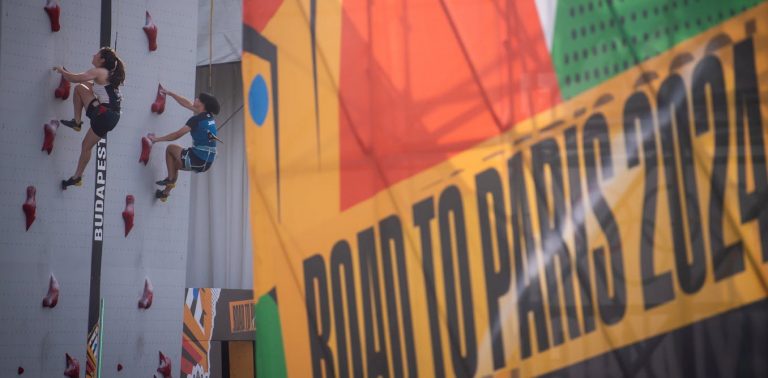The Olympic Games have been the world’s premier sporting event for over a century.
During this time the Olympic Movement has faced many challenges, but what is often overlooked is how it has had to continually evolve since the first modern games in 1896.
Arguably the biggest challenge for the Olympics today is maintaining its appeal to modern audiences, particularly Gen Z.
To meet this challenge, the Olympic movement is undergoing some reforms, including adding new and unconventional sports in the hopes of appealing to younger people who may have decidedly different tastes.
The question is, will it work, and will it have unexpected consequences?
The 2028 Olympics are expected to feature cricket, baseball, softball, lacrosse, squash and flag football.
Generation Z and sports
Gen Z, born between 1997 and 2009, is widely considered to be digital natives and distinct from previous generations.
While the exact age range of Gen Z is subjective, they are defined by having grown up during the advent of social media and smartphones, so their relationship with technology likely influences their preferences, attitudes, and behaviors.
One such difference is their relationship with sports, with Gen Z considered to be less of an avid sports watcher than older generations.
Recent studies have shown that Gen Z is significantly more likely to watch entertainment content (48%) compared to sports content (23%). This contrasts with older generations such as the Baby Boomers (1946-1964), who watch more sports at 41%.
But Gen Z’s disinterest in sports shouldn’t be exaggerated.
While they may watch less sports than most, sports still play an important role in their lives. The difference is in how they watch sports: primarily online, in short formats or highlights packages, and more likely to follow individual athletes rather than teams or leagues.
How are the Olympics catering to Gen Z?
The International Olympic Committee (IOC) has added a series of new sports to the Olympic program in recent years in an effort to attract younger audiences.
This means that the Tokyo Games will feature a record number of sports (33) and events (339), including non-traditional sports such as skateboarding, sport climbing and surfing.
The Paris Games retained these new sports and also saw the debut of breaking, known to many as breakdancing.
There seems to be a lot of support for these new additions among the younger generation.
A recent YouGov survey found that a significant proportion of Gen Z respondents said they would be more likely to watch the Olympics due to the specific inclusion of breaking (30%), skateboarding (31%), sport climbing (32%) and surfing (24%) in the Paris Olympics.
This positive trend continues among Millennials (1981-1996), with breakdancing (32%), skateboarding (34%), sport climbing (32%) and surfing (33%) all gaining in popularity.
A balance between tradition and modernity
The Olympics must strike a balance when introducing new sports: Can they modernize the games to attract new audiences while still maintaining the traditions and prestige that have been cultivated over 128 years?
From one perspective, the IOC could learn from the widely studied “New Coke” debacle, which offers a lesson in popular products over-adapting in response to perceived trends.
Concerned that younger customers were leaning towards Pepsi’s sweeter taste, Coca-Cola changed its 99-year-old recipe to create “New Coke” in 1985. The move sparked fierce backlash from loyal customers, forcing Coca-Cola to reintroduce “Coca-Cola Classic” just 79 days later.
But history also shows that sports have successfully evolved to adapt to changing cultural norms and tastes.
ESPN’s launch of the X Games in 1995 is an instructive example.
The X Games capitalized on the popularity among younger audiences of fringe extreme sports like skateboarding, surfing and BMX, which were then added to the Olympic programme.
The X-Games demonstrated that when the preferences of a consumer group are ignored, these consumers will seek alternatives.
Unintended consequences
The introduction of unconventional Olympic sports may attract younger audiences, but it also runs the risk of disillusioning older existing audiences, as the “New Coca-Cola” case study shows.
In the same YouGov survey referenced above, 36% of Baby Boomers said the addition of skateboarding to the Olympics made them less likely to watch the Olympics, with similar sentiment expressed about sport climbing (down 31%) and surfing (down 29%).
But their strongest anger was directed at the disruptive content, with 45% saying the inclusion of disruptive content would make them less likely to watch the Olympics overall.
There may be a feeling among baby boomers that these new sports lack the purity, tradition and Olympic heritage of the more established sports and that their inclusion would undermine the prestige of the sport.
Generational change
Baby Boomers are likely to be unhappy with these new additions, but the IOC will undoubtedly be sensitive to shifting generational dynamics.
For example, in Australia’s population, Gen Z (16.6%) is approaching the size of the Baby Boomers (18.5%). If you combine Gen Z with its successor, Generation Alpha (2010-present), and combine the Baby Boomers with their predecessors, the Silent Generation (1925-1945), they make up 33% and 24% of the Australian population, respectively.
As this generational shift continues, it is therefore likely that the preferences of young people will become more prominent in the strategic direction of the Olympic Movement.
For now, the IOC will likely walk a careful tightrope, balancing innovation and tradition.
Trial and error and detailed audience analysis allow us to quickly adapt to changing circumstances and keep the most people happy.


